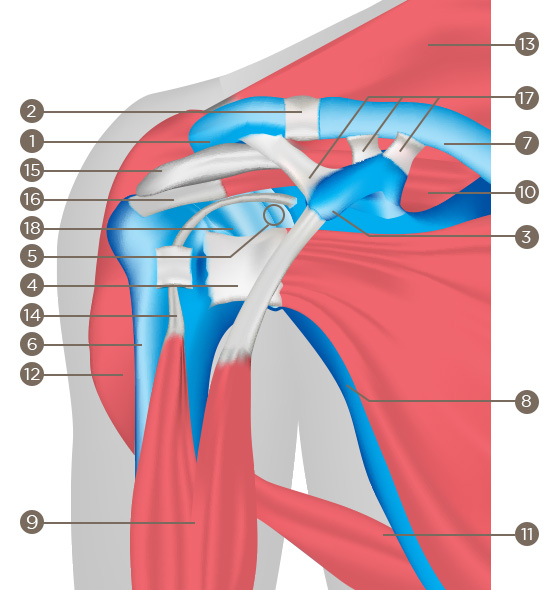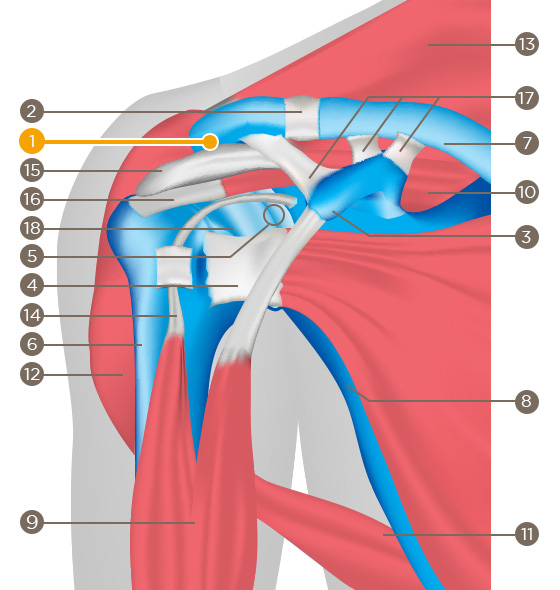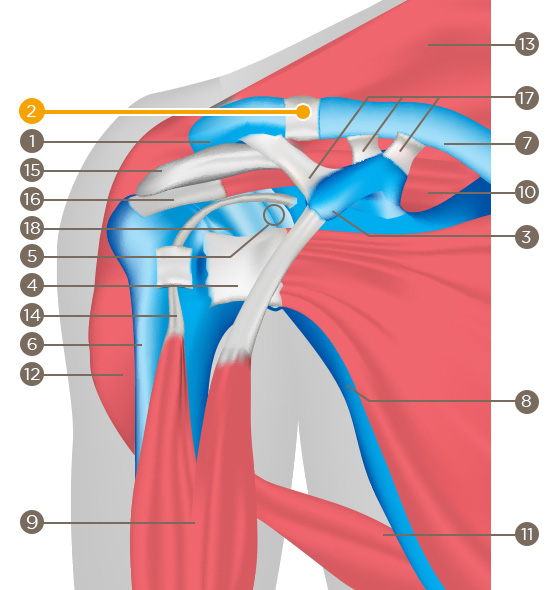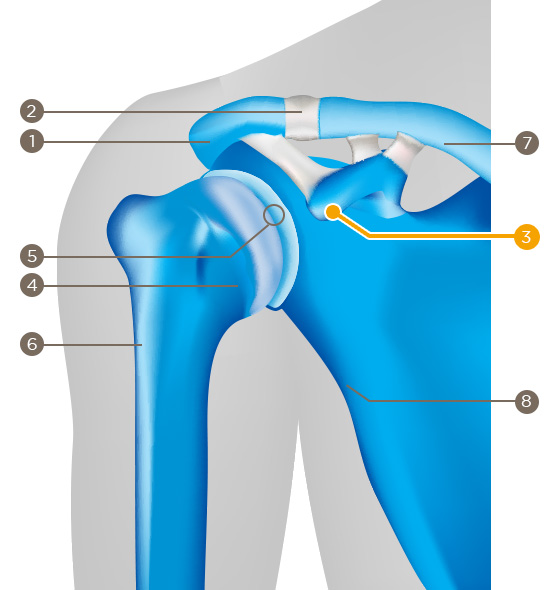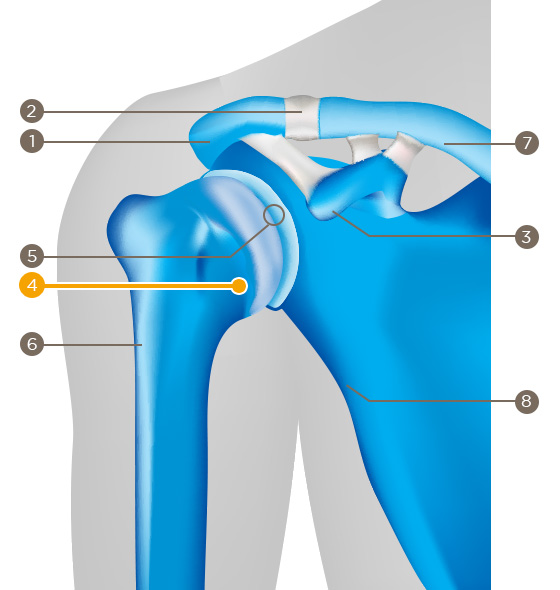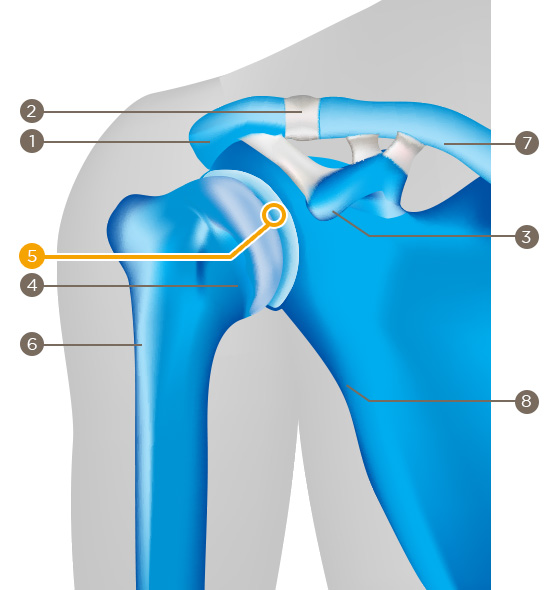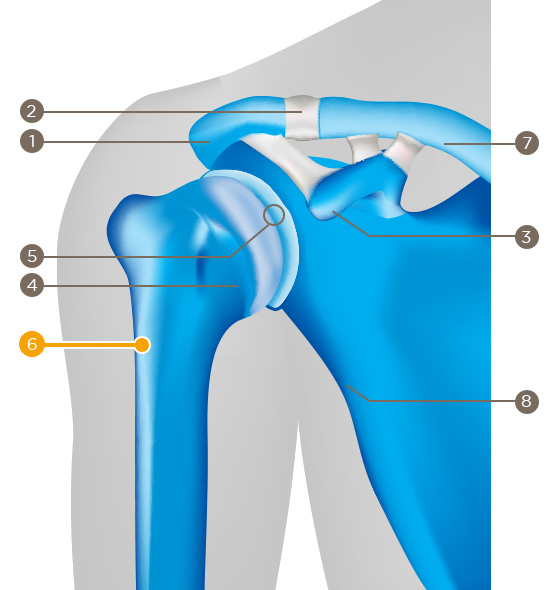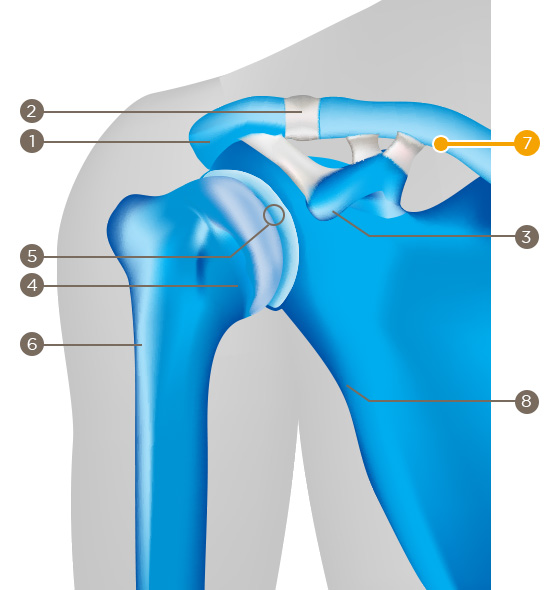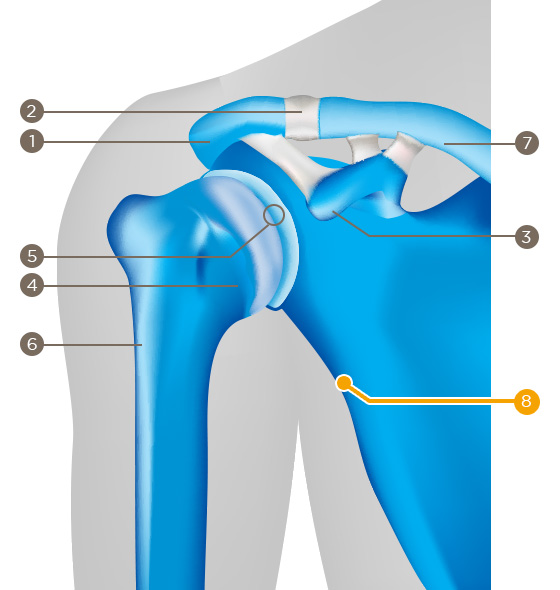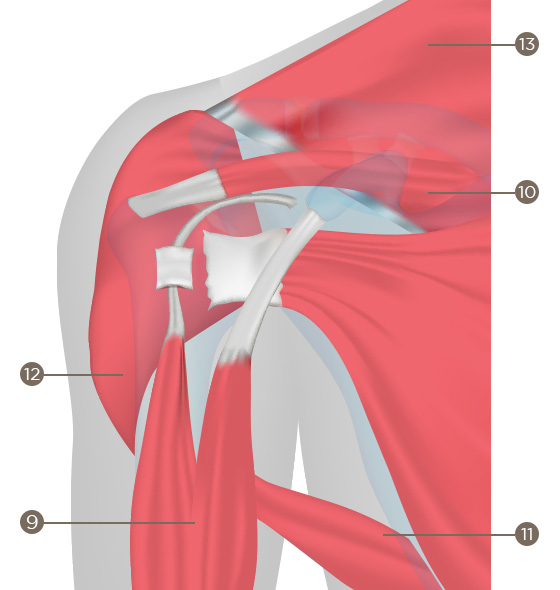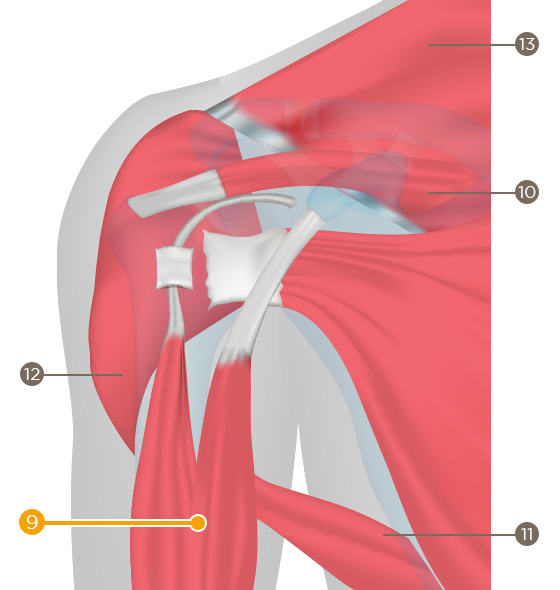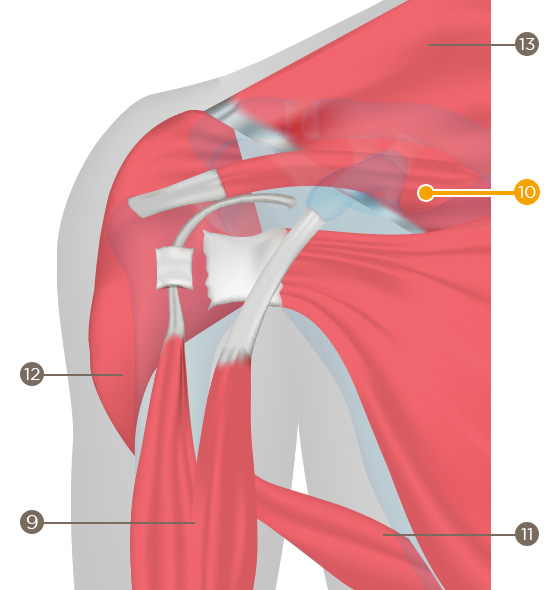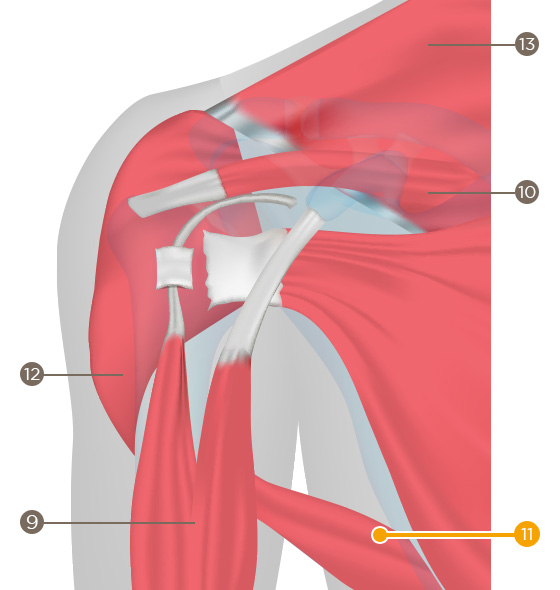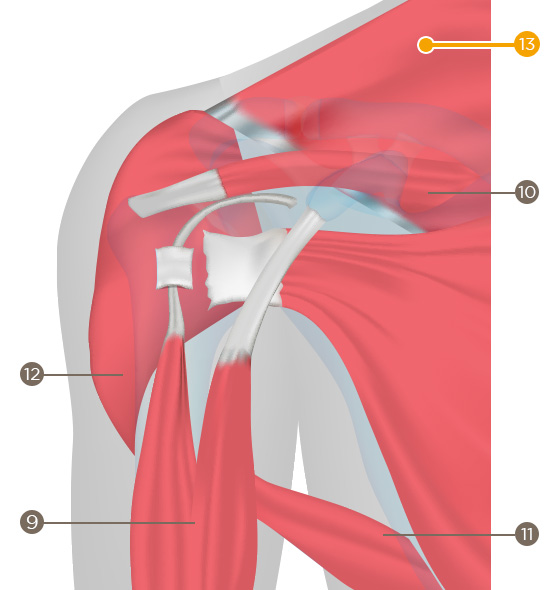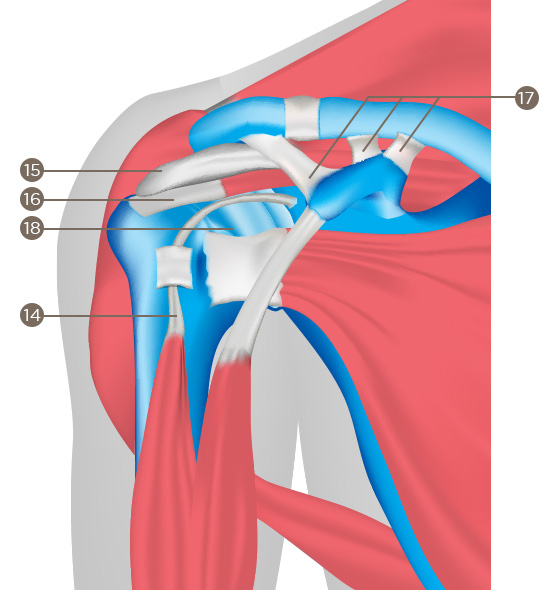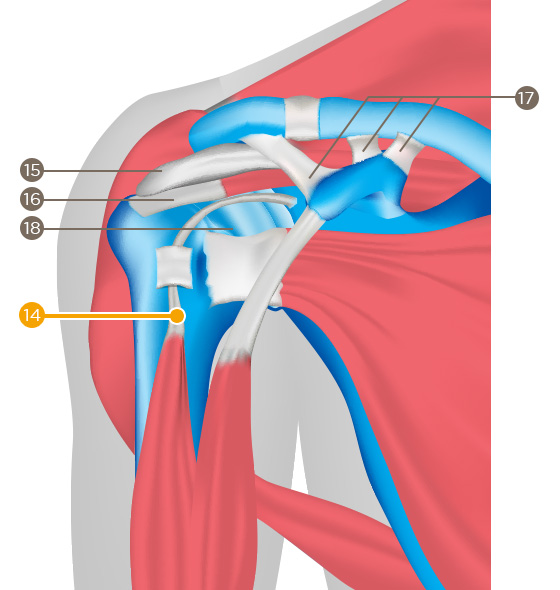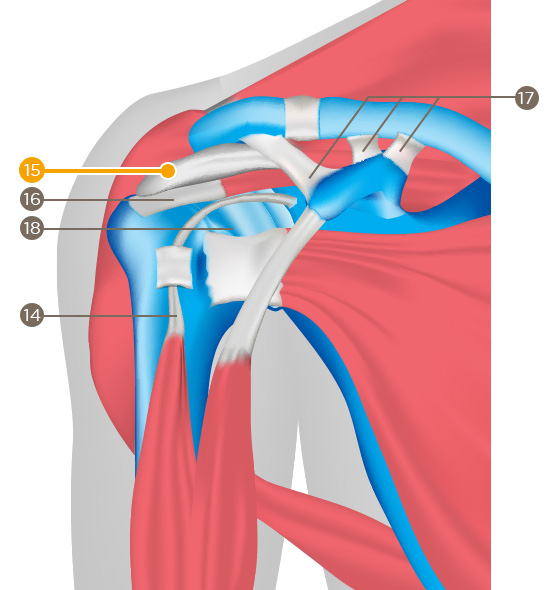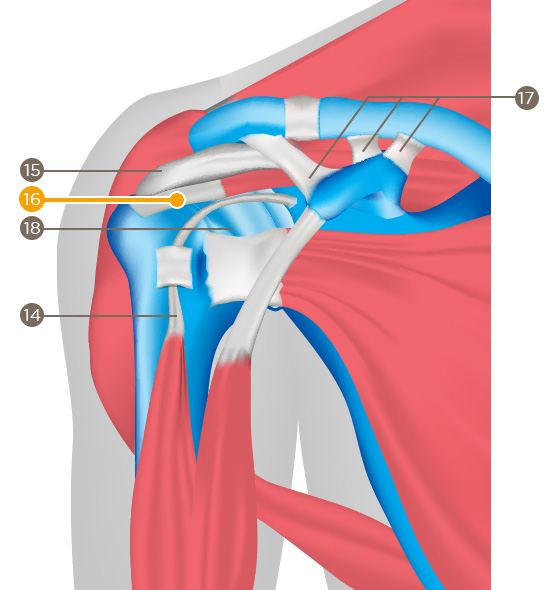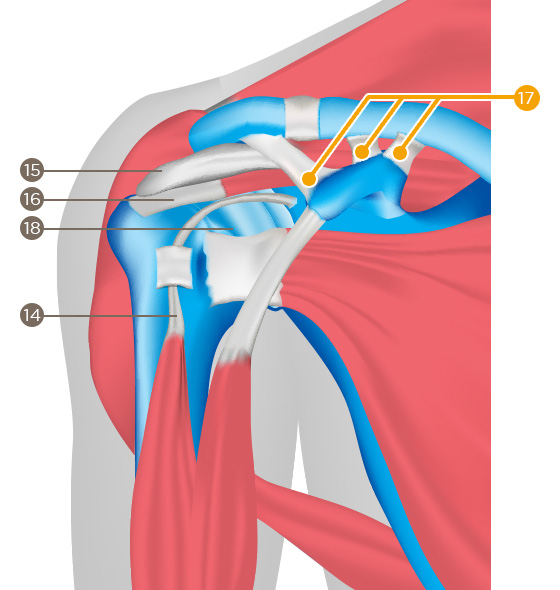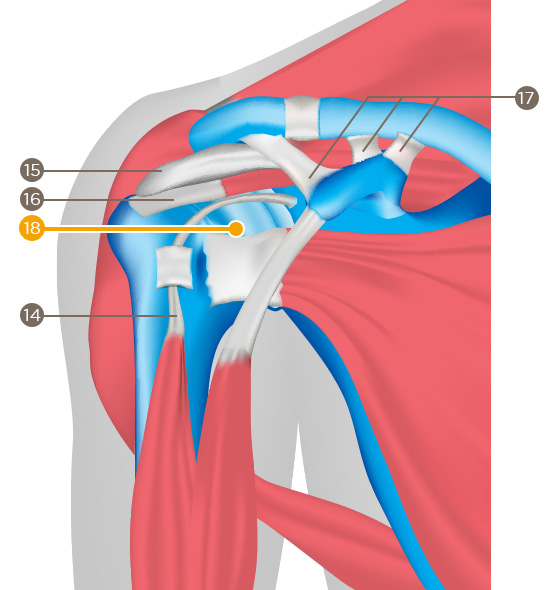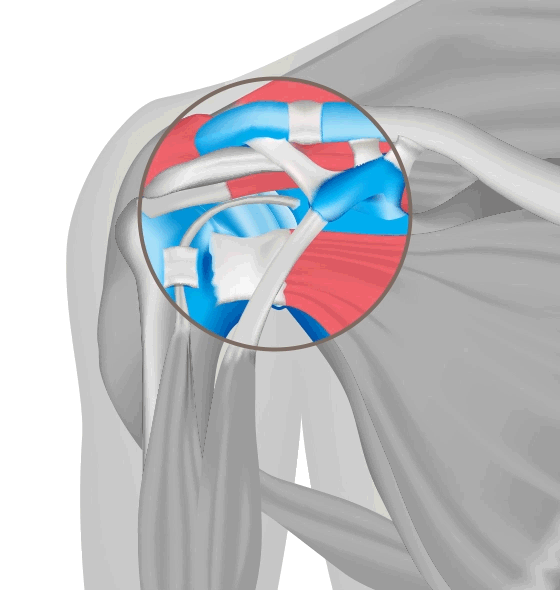Sometimes we might feel as if we have the weight of the world on our shoulders. But there is a lot that can weigh on our shoulders in a physical sense, too.
The shoulder is a highly complex mechanism for enabling movement that can quickly and easily be put out of line – either from frequently working at shoulder height, receiving a blow to the shoulder, poor posture, a pulled muscle and so on.
Read on to learn more about the shoulders and the most common problems and diseases. You can also find the right contact person to assist with your enquiry.
Treatments
1) Total and reverse shoulder replacement:
A shoulder prosthesis is an artificial shoulder joint. It is implanted in severe osteoarthritis (degeneration) of the shoulder joint, in humeral head fractures and in non-repairable rotator cuff tears. However, a shoulder prosthesis is not implanted in osteoarthritis of the shoulder joint before other treatment options have proved unsuccessful.
The shoulder joint is essentially a ball-and-socket joint. It consists of the head of the humerus (humeral head) and the shoulder socket. These bone components of the joint are not able to stabilise the shoulder unaided. The shoulder joint is stabilised with the aid of a group of muscles and tendons, the rotator cuff.
A shoulder prosthesis is most commonly implanted in age-related degeneration (osteoarthritis) of the shoulder. If, despite every effort, it is no longer possible to provide adequate relief for the symptoms and pain, then an artificial shoulder joint is often the only remaining treatment option. A shoulder prosthesis may also be implanted in comminuted fractures of the joint head and non-repairable injury to the rotator cuff.
2) Arthroscopic rotator cuff surgery and SLAP repair
The rotator cuff is a group of tendons and muscles in shoulder that provides support to the shoulder joint and helps in lifting and rotating the arm. Due to injury or trauma the rotator cuff tendon can be torn or damaged or get pinched by the bones around them causing pain, inflammation and difficulty in movement. In such cases, surgery is performed and most of these surgeries are done arthroscopically which a minimally invasive procedure. This technique allows little trauma to surrounding tissue, relatively fast recovery and less scarring.
The term SLAP is an acronym for ‘Superior Labrum Anterior and Posterior’. The labrum is a ring of cartilage that supports the ball and socket of the shoulder joint. A SLAP tear happens at to the bicep tendon that is attached to the labrum. This is common in high performing athletes with symptoms such as catching, locking, loss of strength and a dead arm feeling. In case conservative options are not effective, arthroscopic surgery is performed.
3) Arthroscopic / open acromio- clavicular joint (ACJ) resection, repair and reconstruction:
The acromioclavicular joint (ACJ) is one of the three joints in the shoulder which sits at the top of the shoulder that connects the clavicle (collarbone) to the scapula (shoulder joint). The joint is stabilised by three ligaments. Injury to the ACJ is commonly known as separate shoulder, which is different from a dislocated shoulder, and is often caused by physical contact sports like football/soccer, rugby and wrestling.
The dislocation of the AC joint is visible with an apparent bump at the end of collarbone (clavicle). When ligaments are completely torn they are regarded as grade III injuries which requires AC joint reconstruction surgery. The surgery may be performed either traditionally by opening the site or arthroscopically depending on the severity of the injury and patient’s overall condition.
4) Arthroscopic shoulder stabilising surgery:
Arthroscopic shoulder stabilising surgery is performed to treat chronic instability in the shoulder joint which occurs when the head of upper arm bone (humerus) dislocates from its socket (glenoid). This instability usually results from sudden injury or overuse of the joint. The repeated dislocation may lead to arthritis. The instability surgery depends on the different causes of the repeated dislocation such as labrum tear, or rotator cuff or ligament tear in the front of the shoulder. All surgeries aim to tighten the loose ligaments in the shoulder.
5)Arthroscopic subacromial decompression and biceps tenodesis:
A subacromial decompression is a surgery performed for patients with shoulder impingement. Impingement is one of the most common causes of pain in the shoulder. It results from pressure on the rotator cuff from part of the shoulder blade (scapula) as the arm is raised to the shoulder height. The pain may be due to a “bursitis” or inflammation of the bursa overlying the rotator cuff or a “tendonitis” of the cuff itself. In some cases, a partial tear of the rotator cuff may cause impingement pain.
However, if after a course of conservative treatment consisting of anti-inflammatory medication and physical therapy, your symptoms do not improve, arthroscopic subacromial decompression may be recommended by your surgeon. It is performed under local or general anaesthesia to create more room for the rotator cuff tendons. Subacromial decompression, also known as acromioplasty, can be performed with an arthroscope or with an open technique (larger incision).
During the procedure the front (anterior) edge of the acromion (bony prominence at the top of the shoulder blade) is removed along with some of the bursal tissue and the last four or five millimetres of the clavicle to increase subacromial space for the rotator cuff tendons. After treating the problem, the incisions (portals) are closed with sutures.

